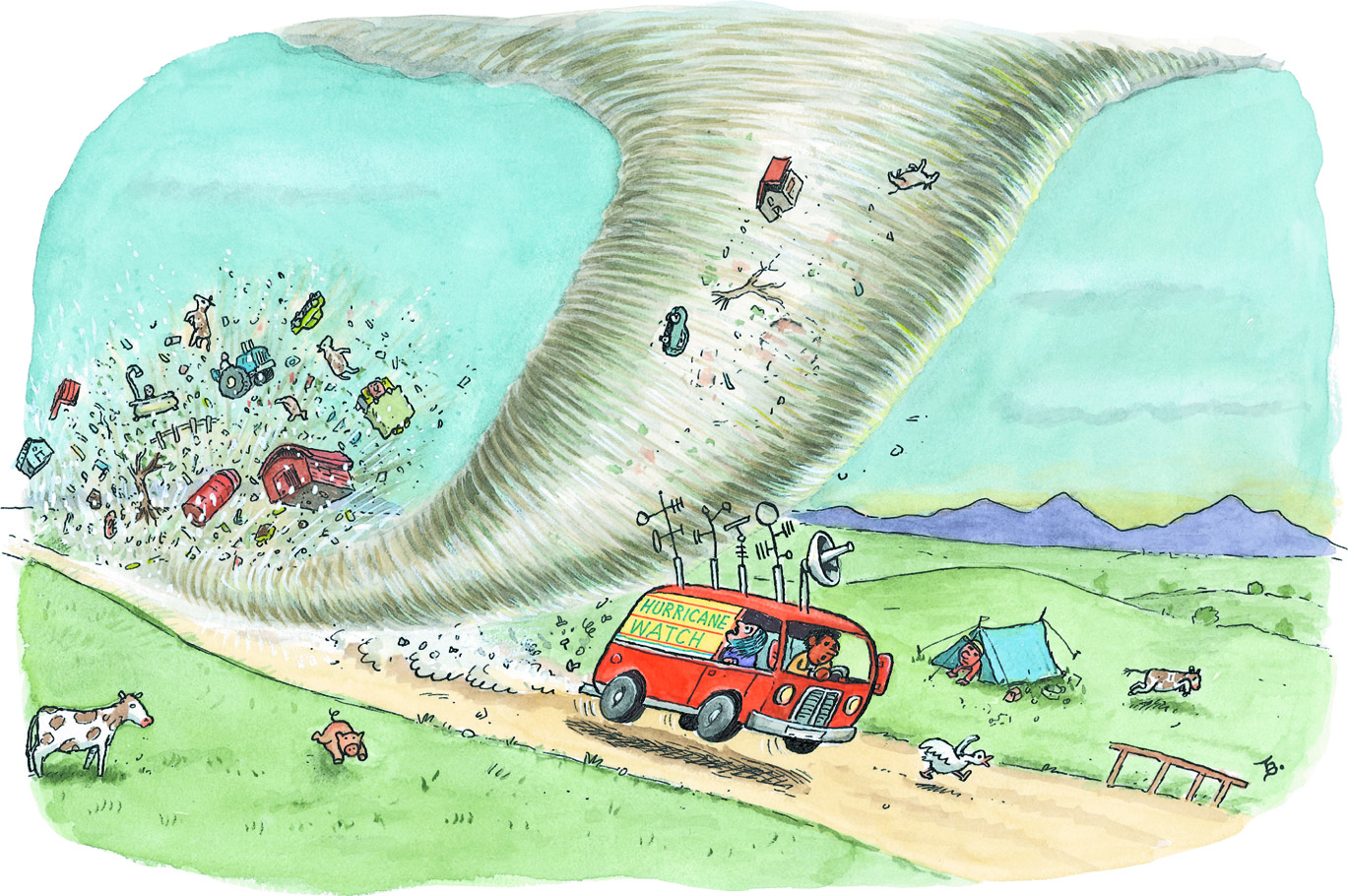
Overview
In this section you will find materials that support the implementation of EarthComm: Florida, Section 4: Severe Winds and Tornadoes.
Learning Outcomes
- Analyze and interpret data to explain the relationship between tornado and thunderstorm distribution across the United States.
- Analyze data to explain the relationship between tornado frequency and time of year.
- Use a model that illustrates the direction of flow of downburst winds.
- Obtain information about the hazards posed by tornadoes and downbursts.
Inquiring Further
- To learn more about cyclone circulation, visit the following web site:
Getting Around the Coriolis Force, Van Domelen, D.J., The Ohio State University
Reviews the basic physics behind the Coriolis effect, how the Coriolis effect influences the operation of the atmosphere and oceans, and why the Coriolis effect is only relevant on certain (larger) scales.
- To learn more about wind shear and airplanes, visit the following web sites:
Special Report: Delta Air Lines Flight 191, National Transport Safety Board
Summarizes the circumstances and probable cause of the crash of Delta Airlines Flight 191 (L-1011).
Unaware That They Have Encountered a Microburst, DC-9 Flight Crew Executes Standard Go-around: Aircraft Flies Into Terrain, Flight Safety Foundation
Examines the circumstances surrounding the crash of a USAir DC-9 in Charlotte, North Carolina in 1994
Escape Through Time – Wind Shear, NOVA Online
Briefly reviews the dangers caused by downbursts to airplanes. Discusses the steps that have been taken to reduce the number of incidents involving microbursts and planes.
- Movies about tornadoes include:
The Wizard Of Oz (1939)
Twister (1996)
Storm Chasers: Revenge of the Twister (1998)
Night of the Twisters (1996)
Tornado! (1996)
Resources
To learn more about this topic, visit the following web sites:
Downbursts and Tornadoes
The Online Tornado FAQ, NOAA
Reviews information related to tornadoes, including: what tornadoes are, how they form, how they move, and how they are defined. Includes links within the text which open pages with tornado related images.
Severe Weather, NOAA
Find out when and where there is a risk of severe weather from the Storm Prediction Center.
U.S. Tornado Climatology, NOAA
Includes data (maps) of tornado occurrences by state, grouped according to tornado size.
U.S. Tornado History FAQ, NOAA
Answers to a variety of questions about formation, sizes, duration, and impacts.
Downbursts, NOAA
Explains what causes downbursts, how they differ from tornadoes, and why they can be dangerous for airplanes.
This Is Why You Don't Want to Fly into a Microburst, Smithsonian
Video showing why microbursts are severe threats to airplane safety.
Tornado Safety Tips
Are You Ready? – Tornadoes, FEMA
Explains the difference between a tornado watch and warning, how to recognize tornado dangers, and tips for safety before, during, and after a tornado.
Tornado Safety, NOAA
Reviews the basic steps for tornado safety. Click on links to view tornado and damage images.
Tornado Preparedness Tips for School Administrators, NOAA
Looks specifically at steps schools should take to assure student safety during a tornado, including finding shelter and what to do after the tornado.
Thunderstorm and Camping Safety, Cooperative Institute for Mesoscale Meteorology
Includes tips on protecting oneself from tornadoes associated with thunderstorms while in the outdoors hiking or camping.
